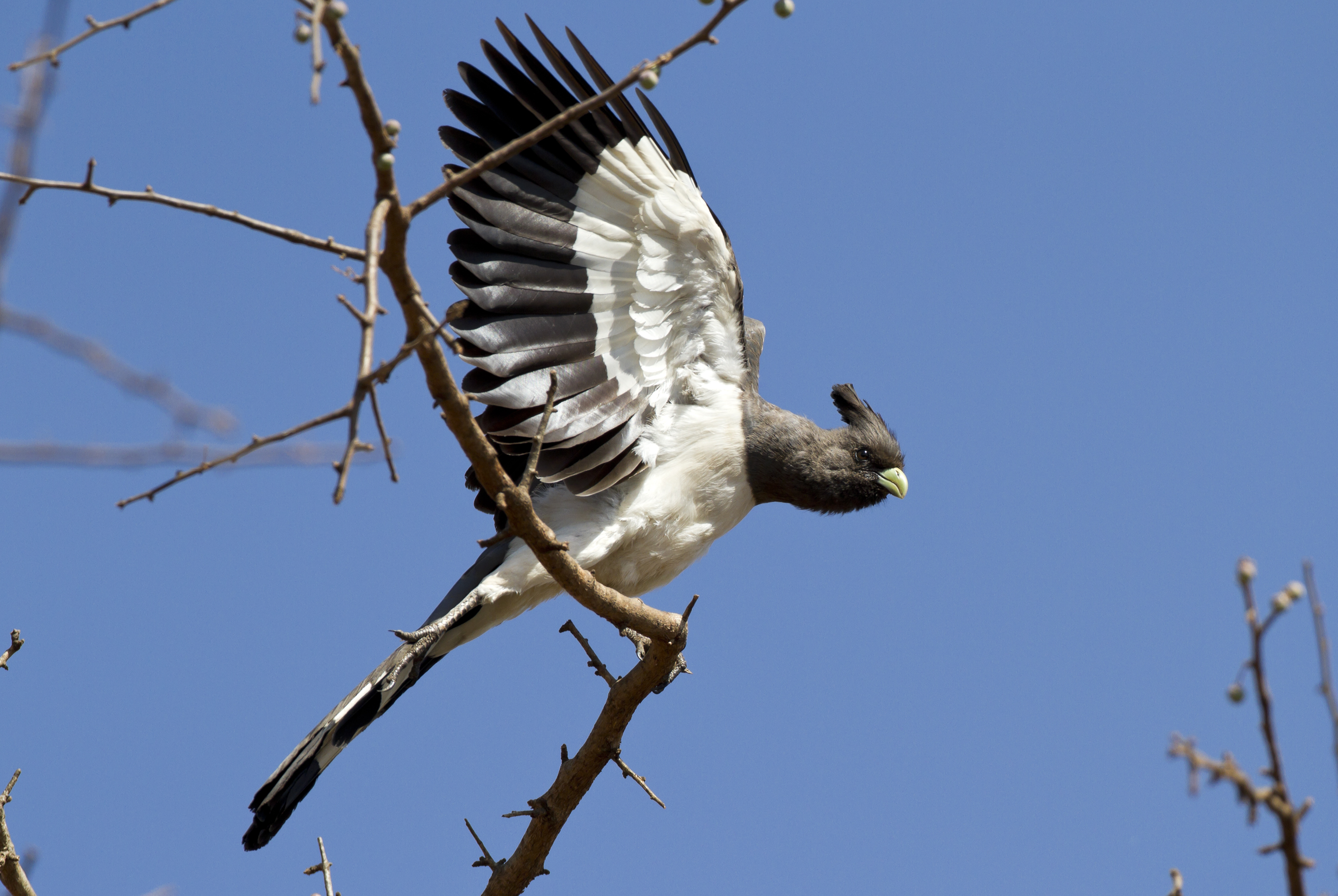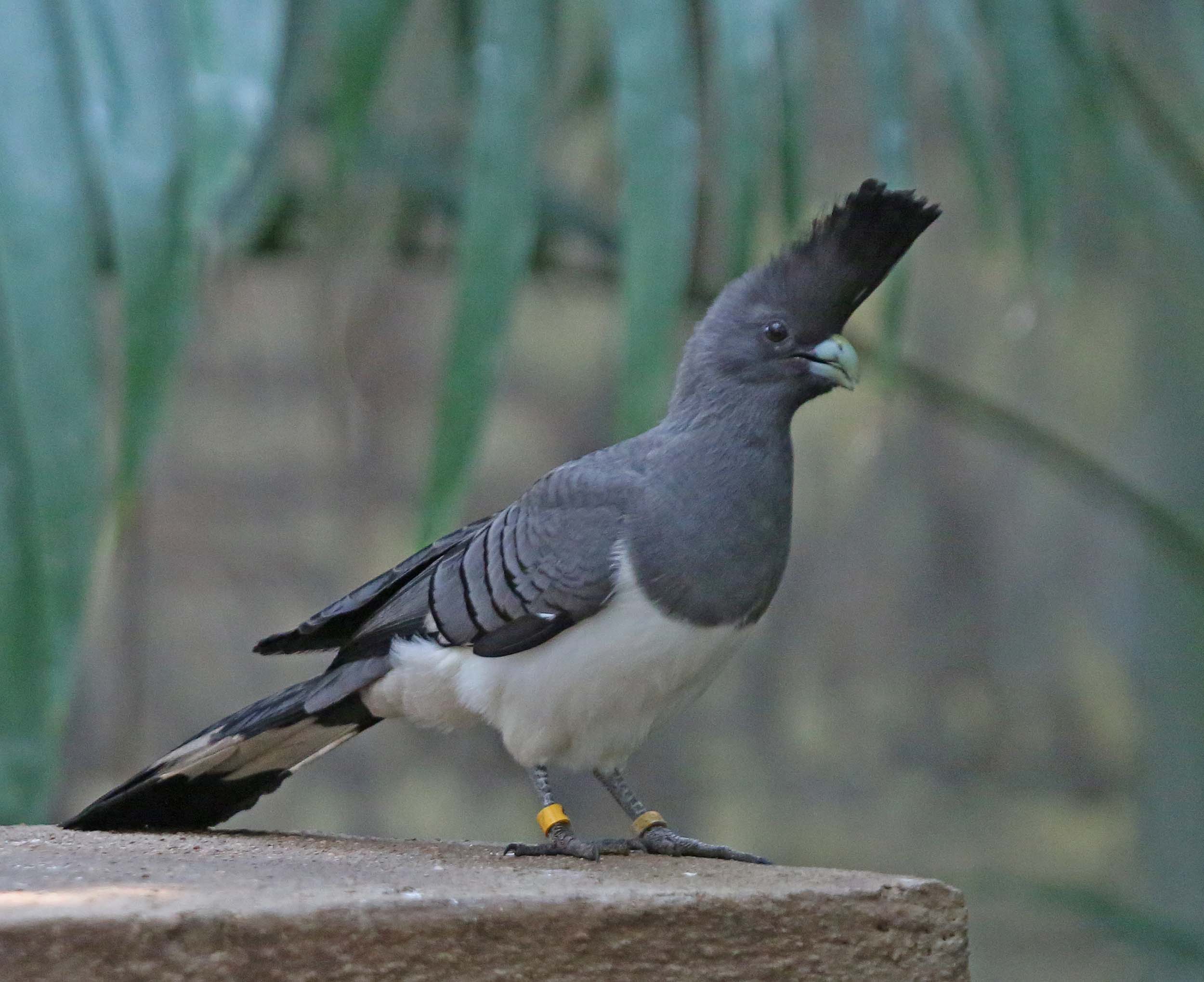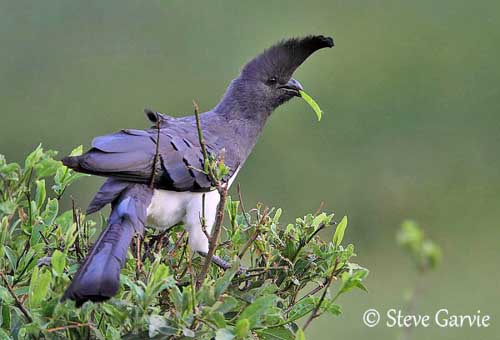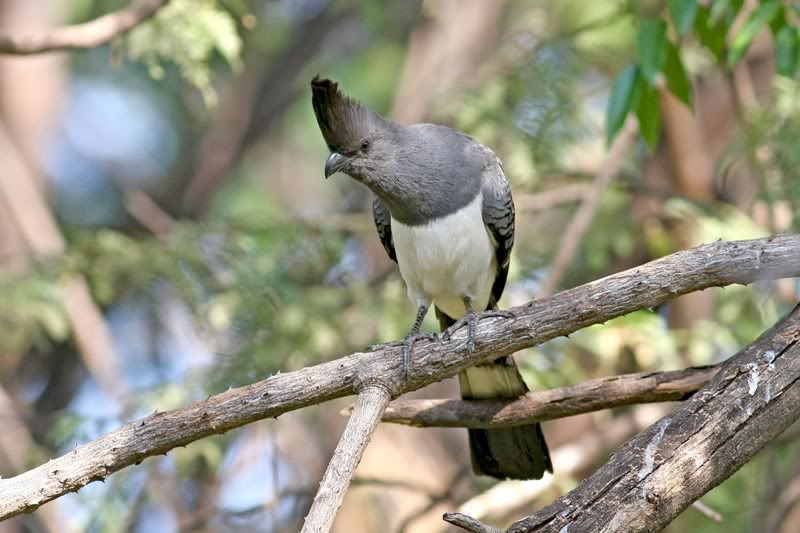
Criniferoides leucogaster
SUBFAMILY
Criniferinae
TAXONOMY
Chizaerhis leucogaster Ruppell, 1842, southern Ethiopia. Monotypic.
OTHER COMMON NAMES
English: White-bellied plantain-eater; French: Touraco a ventre
blanc; German: Weissbauch-Larmvogel; Spanish: Turaco
Ventriblanco.
PHYSICAL CHARACTERISTICS
19–21 in (48–53 cm); 6.0–8.8 oz (170–250 g). A large grayand-
white turaco with a stiff and pointed brownish gray crest
rising from the forehead. Upperparts, sides of head, chin, and
entire neck and breast gray, rest of underparts white. Black
flight feathers with white bases form a conspicuous white
speculum in flight; tail black with a broad white median band.
Bill blackish in male, pea green in the female (sometimes yellowish
when breeding). Juveniles similar to adult but browner.
DISTRIBUTION
Widely distributed in the arid and semi-arid savannas of eastern
and northeastern Africa from Somalia, Ethiopia, and southern
Sudan south through northern Uganda, northern and
eastern Kenya to central Tanzania.
HABITAT
Typically in hot, low acacia savannas from sea level to 4,550 ft
(1,400 m), but reaching 6,500 ft (2,000 m) on the Laikipia
Plateau in central Kenya.
BEHAVIOR
A common and often conspicuous bird, occurring singly, in
pairs, or family groups. Flies somewhat slowly with rather
rapid wingbeats and much gliding. Like all turacos becomes
extremely agile once landed. A noisy bird with a variety of
sheep-like bleating calls.
FEEDING ECOLOGY AND DIET
Flowers, leaf shoots, and young acacia seed pods form an important
aspect of their diet, as do the fleshy ripe fruits of Balanites
trees and bushes. Will also readily eat exotic fruits as
Carica (papaya) and Psidium (guava) if offered at bird feeders.
Flowers and foliage of many dry country plants are consumed
in vast quantities, as are their fruits whenever available.
REPRODUCTIVE BIOLOGY
Two or three glossy pale bluish green eggs are laid in a rather
small, flat structure of twigs some 10–40 ft (3–12 m) above
ground, generally in an acacia or Balanites tree. Incubation is
by both sexes for 27–28 days. On hatching the young are covered
in dark grayish brown down with a patch of bare skin
around the eyes. They are fed a regurgitated pulp by both parents,
and on a few occasions other birds have been observed
“helping” at the nest. Fledging period remains unrecorded.
CONSERVATION STATUS
Not globally threatened, and with no major threats to either its
HABITAT
or populations. With some trapping and export reported
from Tanzania, it is recommended that it be listed in
Appendix 3 of the CITES legislation.
SIGNIFICANCE TO HUMANS
None known.
Other popular Animals
Photo Gallery of - White-bellied go-away-bird




 Animalia Life
Animalia Life